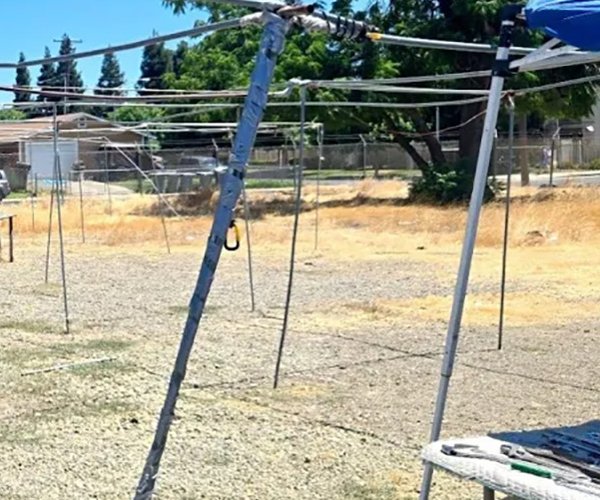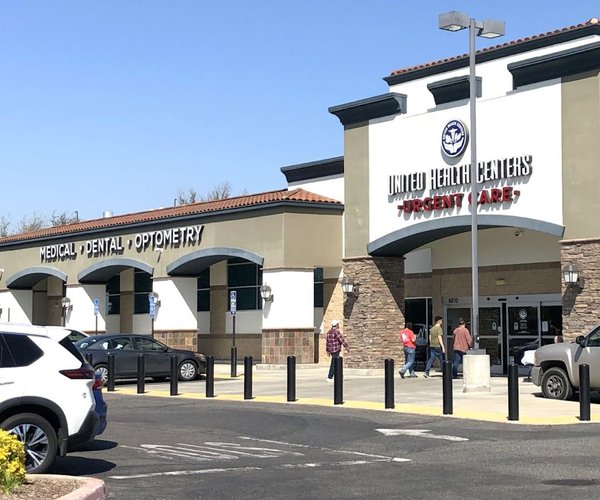Those traveling on Golden State Boulevard near Fulkerth Road know that the Stanislaus County Fair is gearing up for its 2016 run because of the bright-colored messages that flash on the electronic billboard located on the southeast corner of the state-owned property. Currently the fairgrounds' sign is the only electronic message board in Turlock, but that could soon change.
The Turlock Planning Commission will hear a report prepared by City staff in an effort to gain direction on creating a possible city ordinance regarding electronic signs.
"We don't have anything specific in our ordinances that address them," said Deputy Director of Development Services and Planning Debra Whitmore about electronic billboards. "A lot of different kinds of questions have propped up; where it will be allowed and under what circumstances?"
The digital sign at the fairgrounds isn't under the City's purview as it is located on state property, but a possible electronic message board ordinance would affect future use of the 85-feet tall digital billboard that sits just to the east of the Turlock Auto Plaza off Fulkerth Road. That billboard was approved by the Turlock City Council in 2004, but hasn't been in use for years.
The brokerage firm that currently owns the property the electronic message board is located on has expressed interest in possibly moving the sign a little further north and making the necessary repairs and upgrades to get it back in use, according to Whitmore.
While the brokerage firm considers what to do with their freeway sign, Whitmore will be providing the Planning Commission information about electronic billboards and the types of regulations other cities and municipalities have when it comes to their use.
One of the main issues that needs to be discussed, according to Whitmore, is where to allow these giant electronic signs —only along the freeway and/or in major commercial corridors.
Many cities limit electronic message board to businesses that are located adjacent to the freeway. Other cities allow the signs to be used more generally in commercial areas, but require the signs to be limited to portions of the commercial areas located away from residential zones.
Some cities, such as Modesto, limit the use of digital billboards to specific uses including churches, entertainment centers, convention centers and sports facilities. According to the City staff report, however, this can be legally problematic unless a very clear public purpose can be developed to justify the limitation to the specified uses.
Other issues involved with the electronic message boards are on-site versus off-site advertising, sign construction parameters, sign area allowance and lighting standards.
The California Outdoor Advertising Act establishes certain maximum illumination standards for all lighted signs and requires that messages be displayed a minimum of four seconds. Other cities have expanded on those standards, like Modesto which requires messages be displayed for at least 20 seconds.
Some cities have required signs to be equipped with a light meter that automatically adjusts the illumination based on the ambient light levels. A few jurisdictions have required that the sign be turned off during specified hours of the day if located near residential areas.
All of these issues and more regarding electronic message boards will be discussed at the next Planning Commission meeting set for 6 p.m. Thursday at City Hall, 156 S. Broadway.
On Thursday, the Planning Commission will also consider:
Issuing a one-year extension on the planned development of 17 remaining units — three fourplexes, one triplex and one duplex — of a previously approved 40-unit apartment complex at 3155 Niagra St.;Information about the Active Transportation Program Cycle 3 funding and provide input in identifying high-priority areas in the City needing improvement;Information about updating the City's Landscape and Irrigation codes to conform to the Model Water Efficient Landscape Ordinance created by the California Department of Water Resources. This includes implementing separate storm water sewer systems, evaluating street trees and parkway strip landscaping.








